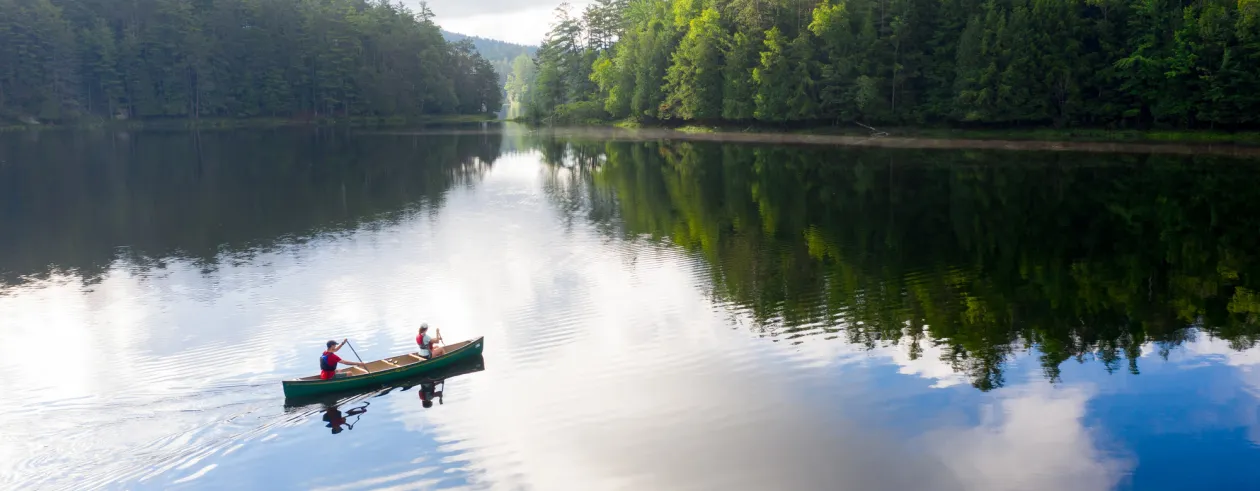
The arrival of spring
Lakes and ponds have lost their winter ice, signaling that spring has arrived in the Adirondacks, which means it’s time to get excited about the paddling season. Paddling in the springtime is a real treat: bug-free days, the shift to warmer weather, and most importantly, the silence. My introverted self relishes spring paddling for the quietness of the season – between early April and late May – when motorboat traffic is at its low point. Without the constant humming of motorboats, everything feels heightened. I can hear things more clearly than in the busier summer months: birds singing their songs, wind rustling through the trees, and the lively chorus of spring peepers – enough for me to utter a deep sigh of satisfaction. I am daydreaming about it now, but before I can indulge in these springtime delights, I have to transition my adventure closet from winter to spring.
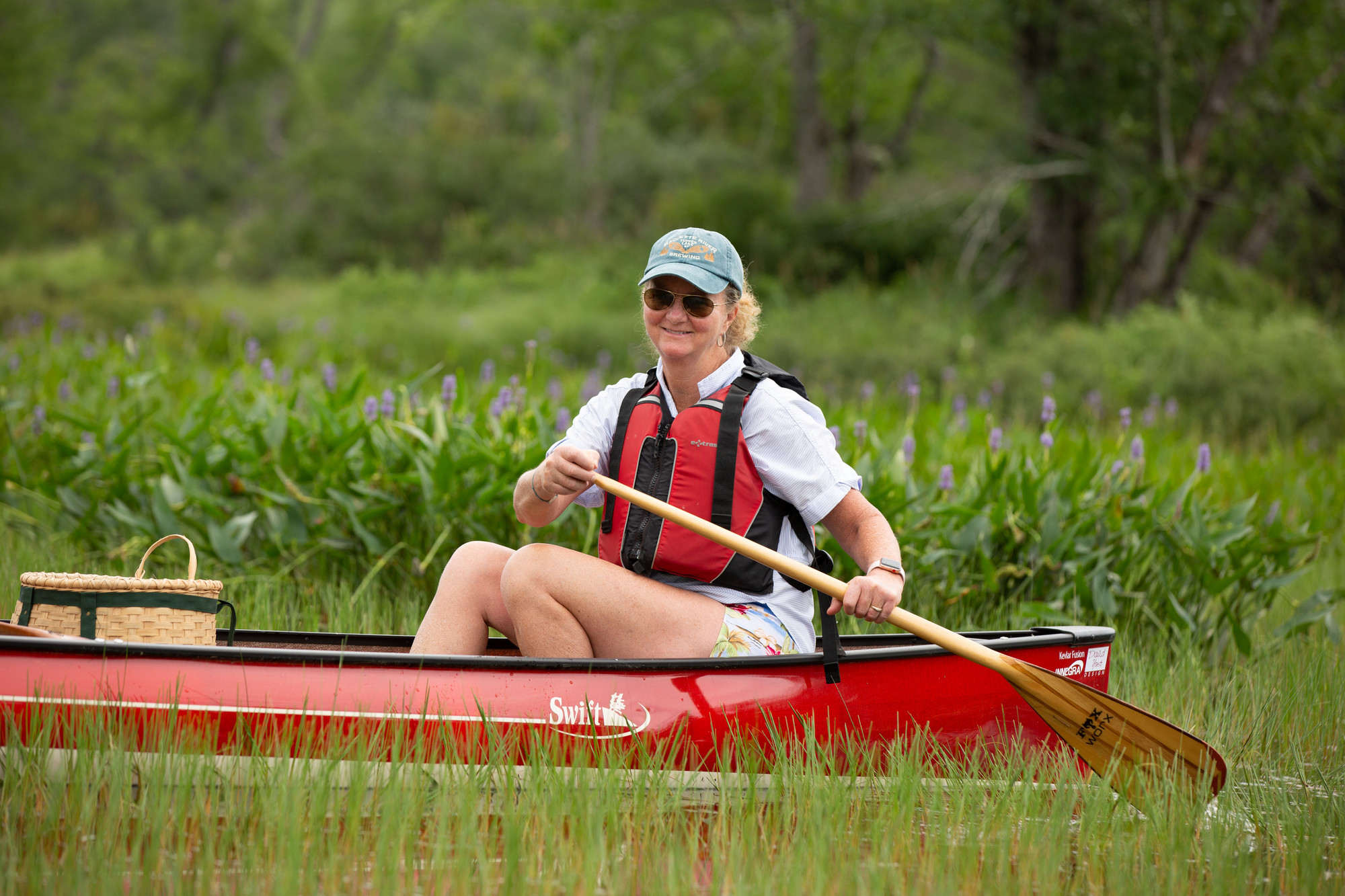
Clothing
Most of my base layers that I use for skiing are the same for paddling: wool socks, synthetic shirt/tights, and an insulating fleece. I always make sure to leave my cotton clothing at home. While cotton is comfortable to wear for general use, it is a terrible insulator when wet. Think about what happens to your bathroom towel, which is made of cotton, after you take a shower; it completely absorbs all the water. Now, consider what would happen to your cotton shirt if you found yourself in the water unexpectedly. That comfy shirt would be sopping wet! Now add in cooler springtime temperatures and you have a recipe for a bad time. Do yourself a favor and wear wool or synthetic layers, like fleece, in order to make sure you can stay warm. I know what you are thinking, “I don’t plan on getting wet when I go paddling.” And you would be right, nobody plans to capsize, especially not during cold water season. There’s an old adage used in the paddling community, I want you to keep in mind, “we’re all in between swims.” So you best be ready for it. Remember, lakes and ponds were recently frozen solid, so they are COLD! Even dipping your feet in the water will take your breath away, which brings me to my next point: dressing for air temperature is different from dressing for immersion. While the air temperature in spring can be warm and sunny, the average water temperature from April-May is usually between 40-60 degrees. With those frigid temperatures, hypothermia is a real concern and should not be taken lightly.
Fortunately, there are a couple of things paddlers can do to mitigate this risk. In an ideal world, a paddler should wear a wetsuit or drysuit in these water temperatures. However, if you don't own one of these suits, you can always layer up with synthetic fabrics. Remember, stay away from cotton! It's also a good idea to bring a dry bag with an extra set of clothes. I usually bring a set of base layers, a fleece, warm socks, winter hat, and a quick-drying towel, so I can change quickly if the need arises. Another item I always bring is a hot beverage, which both serves as an easy way to warm up and is a nice pick-me-up. And last, but not least, be sure to wear a PFD. This is your first line of defense in the water, especially in cold water.
The most important thing is to stay within your paddling ability. If you are new to paddling and it's a windy day, I wouldn't recommend making a big lake crossing. Instead, choose a route that stays closer to shore. Stay within your skill level. If in doubt, don’t go out.
Let's review the tips I mentioned above.
1) Don't wear cotton
2) Seriously, don't wear cotton
3) Dress for the water temperature, not the air temperature
4) Wear a PFD
5) Bring an extra set of clothes
Now you're ready to get out on the water and have some fun! Here are a few places to get you started.
Where to paddle
The Tupper Lake Paddling Triad offers three short, flat water routes; perfect for learning or getting your paddle wet again. All three of the paddles have an option to make it an out-and-back or one-way trip if you have a second car. Let's explore the routes!
Raquette Pond to Setting Pole Dam
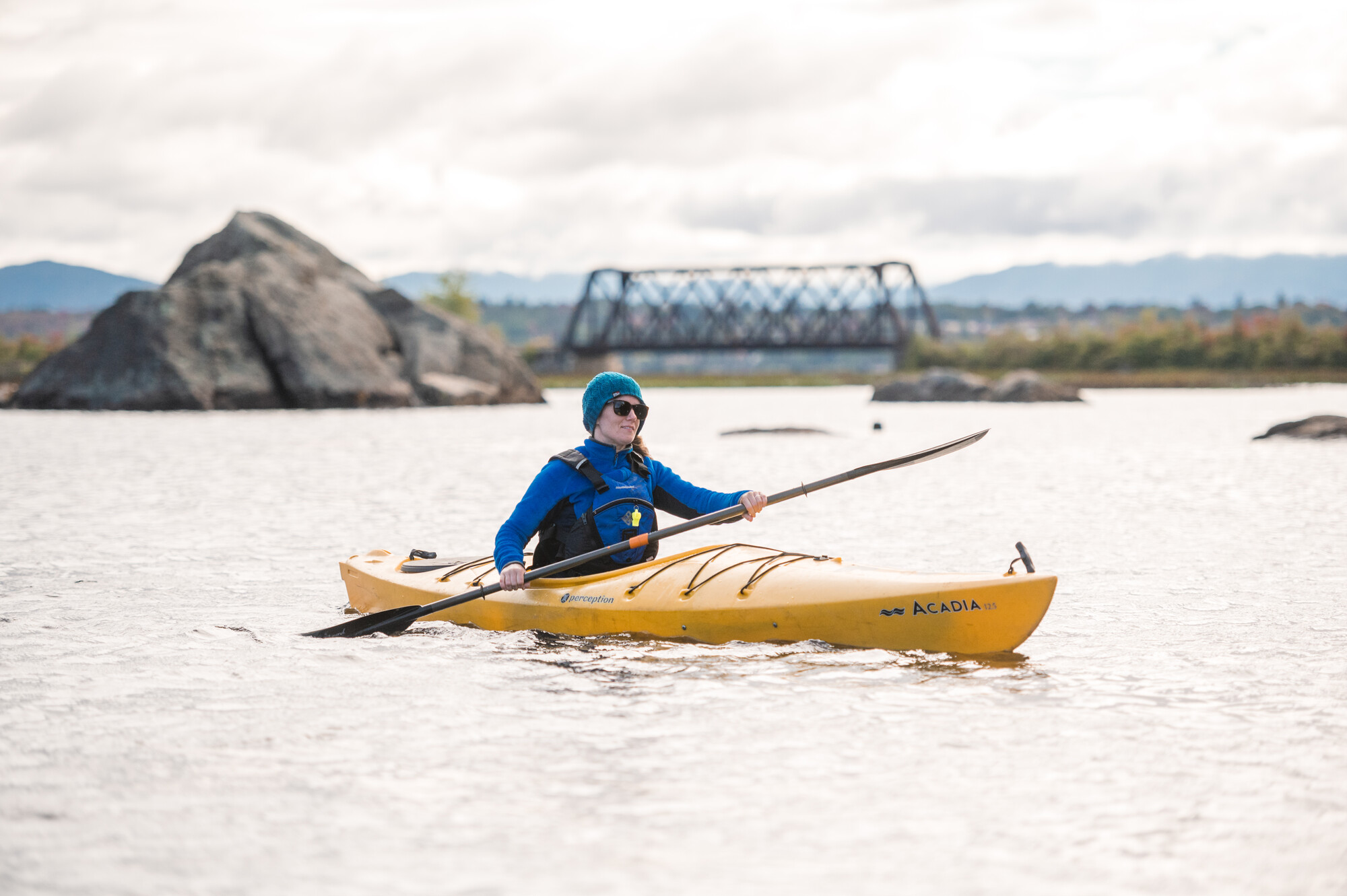
This paddle is short at just 3.25 miles (one-way) and is by far the most accessible option of the paddling triad. You can launch right from town at the Tupper Lake Municipal Park. From there, you paddle across Raquette Pond to the Raquette River, where the current will guide you all the way to Setting Pole Dam. Along the way, you’ll see great views of the village and the low mountains beyond.
Stony Creek Ponds to Axton Landing
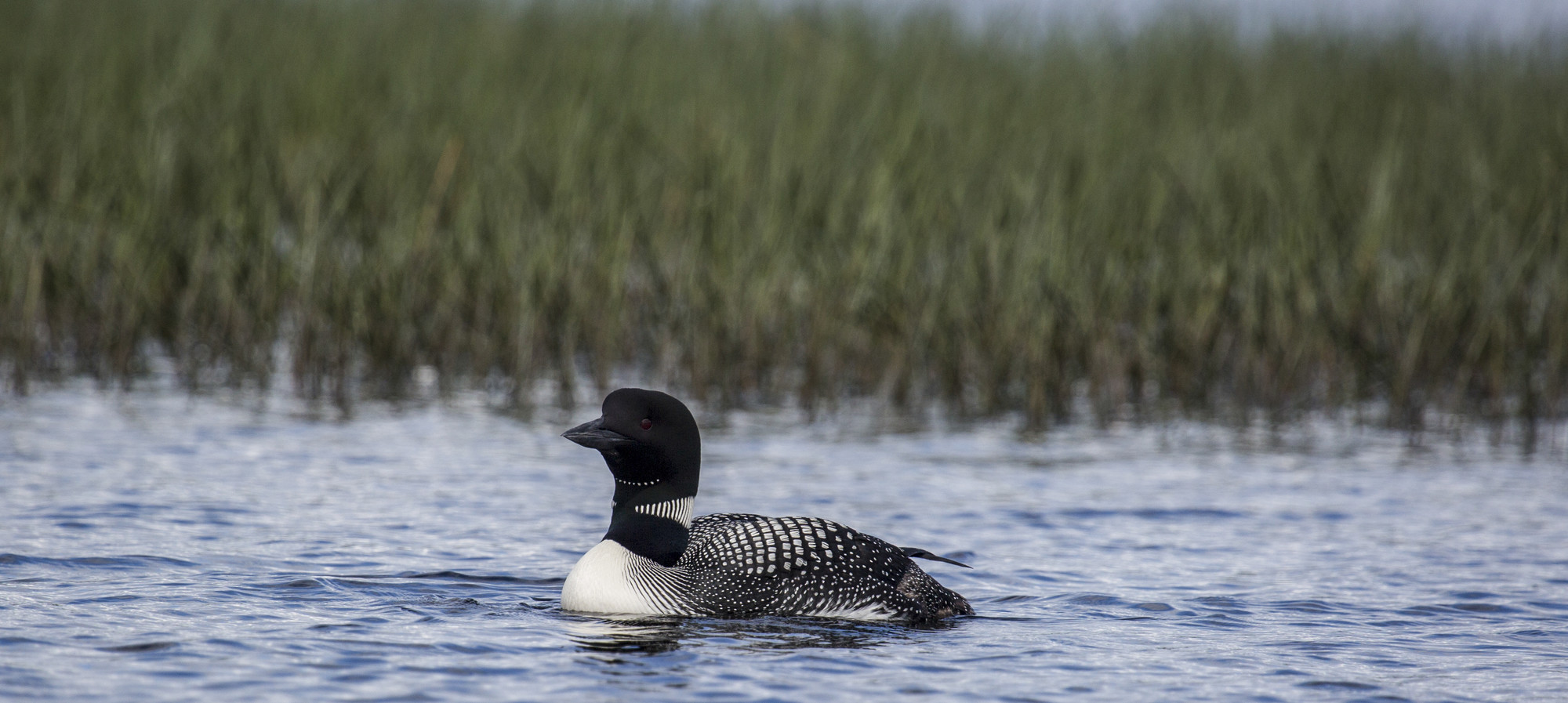
This beautiful, flat water paddle is also 3.25 miles (one-way) but starts a little further from town. A short 10-minute drive from Tupper Lake is the put-in at Coreys Road. The journey begins at Stony Creek Pond and leads to the beautifully meandering Stony Creek. From there, the creek joins the famous Raquette River, where you paddle the rest of the way to the take-out at Axton Landing. Winding down this waterway, there’s a good chance you’ll spot some wildlife. Watch for sweet songbirds, prehistoric-looking herons, and common loons–the iconic bird of the north.
Raquette River Boat Launch (Crusher) to Tupper Lake Boat Launch
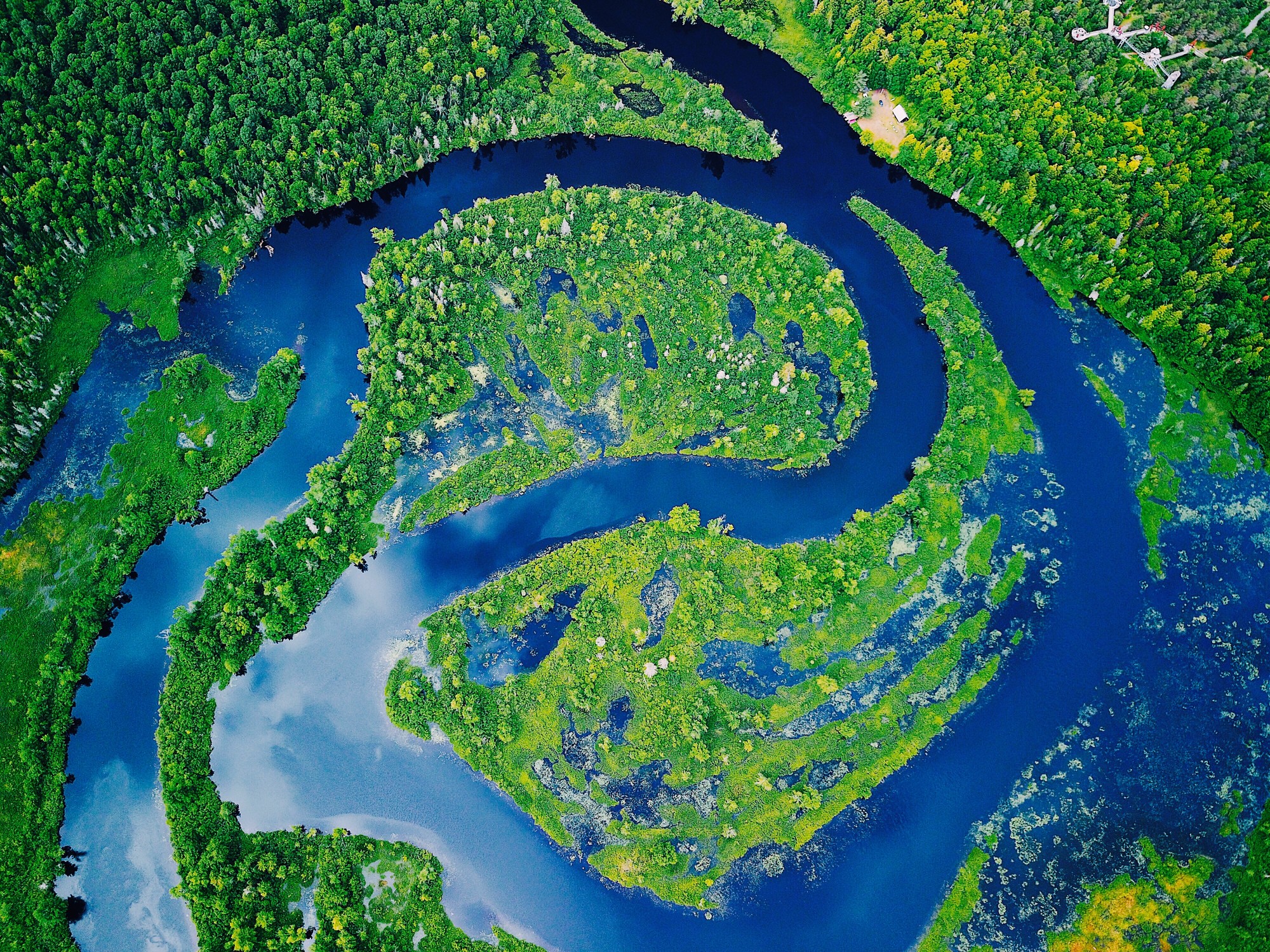
This paddle is the longest of the paddling triad. At 7.75 miles (one-way), it’s twice as long as the other two routes, but don’t let the distance deter you from experiencing this truly incredible paddle–it is certainly worth the extra effort. The twists and turns of the Raquette River will make you feel like you have entered a different world. If you start from the Crusher, it's all downstream paddling and can be set up as a one-way trip if you park a second car at the take-out. Don’t forget to explore the area around The Wild Center and enjoy the famous oxbow.
For more detailed information and other helpful tips, read Paddling Triad 101. Beyond these three routes, there are countless other paddling adventures in the Tupper Lake area to explore.
Gearing up
Don't have a boat? No problem, Raquette River Outfitters in Tupper Lake has everything you need to get out on the water. Raquette River Outfitters is a full-service canoe and kayak outfitter with knowledgeable staff that can assist with route planning, gear selection, and rentals. Rentals include paddles, PFDs, and items to transport a boat on your vehicle. They can also deliver your boats to the put-in/take-out, or arrange a shuttle for an additional fee. Whatever your needs are, Raquette River Outfitters has you covered.
Now get out there and enjoy the lovely spring season, it will be over before you know it.
